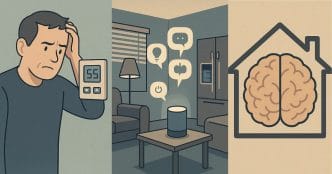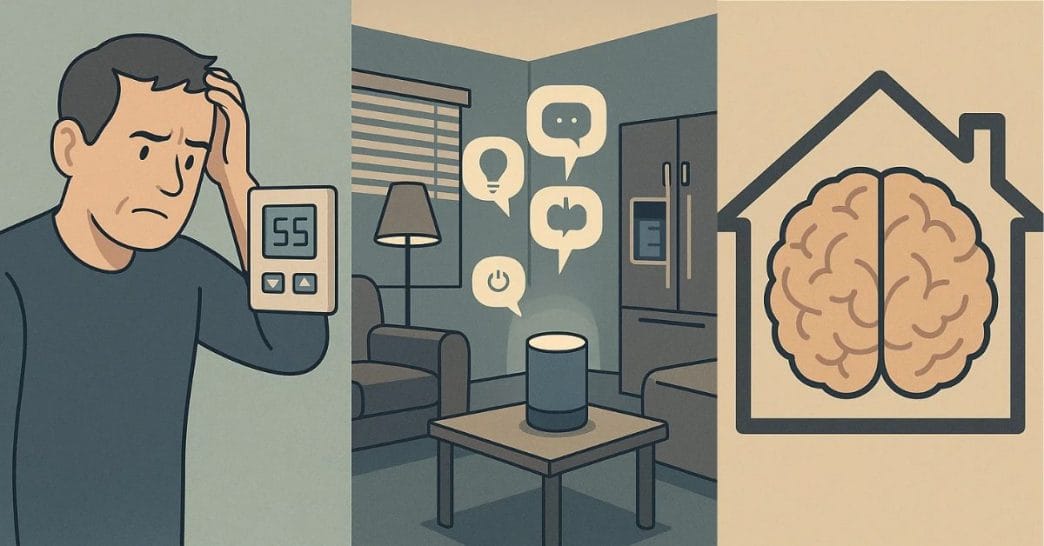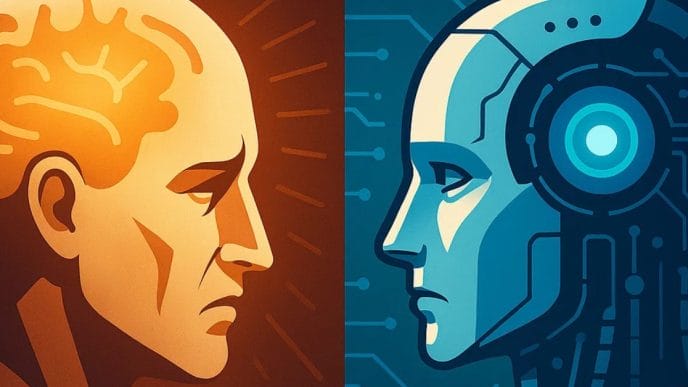“One winter evening, my smart thermostat went offline without warning. The house turned frigid overnight. I stood in front of the wall unit, staring at it, unable to remember how to manually adjust the temperature. The buttons were there, the display was clear, but the memory of how to control it had vanished,” recounts Sarah Tisdale, a single mother who lives with her daughter and a pet cat in a 5000 sq ft villa in Boston.
This might sound extreme to an Indian reader, where most homes are still semi-automated, but it’s a glimpse into where urban living is headed — and what we might quietly lose in the process.
This is not an isolated frustration. As homes become more connected, they quietly rewire how we interact with basic tasks. We celebrate convenience without considering what skills are quietly disappearing in the process. The question is not whether smart homes save time, but what they cost in mental sharpness and problem-solving ability.
How Smart Homes Reprogram Daily Life
Smart home technology emerged as a response to inefficiency. Thermostats that learn your schedule, lights that respond to voice commands, refrigerators that track food inventory — each innovation promises to remove friction. Over time, these conveniences stack, turning houses into automated systems that anticipate every need.
The appeal is obvious. Yet beneath the marketing lies a psychological shift. By delegating decision-making to devices, we are no longer active participants in our routines. We do not choose lighting based on mood; presets choose for us. We do not plan meals from scratch; grocery algorithms restock what we bought last week. This slow handoff is called cognitive outsourcing — and it fundamentally changes how we think.
Cognitive Outsourcing and Mental Atrophy
Cognitive outsourcing describes the process of transferring mental tasks to external tools. A calendar app remembers birthdays, a navigation app remembers routes, and a smart assistant answers questions we once solved ourselves. The benefit is clear: more mental bandwidth for other priorities.
But this offloading is not neutral. Psychology research shows that when a skill is not practiced, the brain reduces its investment in maintaining it. Neural pathways weaken. This is the use it or lose it principle in action. In smart homes, it manifests subtly: forgetting how to adjust manual controls, losing awareness of backup options, relying on algorithms for choices you once made intuitively.
The Micro-Decisions We No Longer Make
Daily life used to involve countless small decisions. Adjusting curtains with changing sunlight. Choosing what to cook based on what was in the pantry. Turning lights down when the evening settled in. These tasks seem trivial, yet they engage attention and reinforce adaptability.
Smart systems erase these decisions. Automated blinds track sunlight automatically. Pre-programmed ambiance removes the need to experiment with lighting. Subscription groceries repeat previous purchases without prompting creativity. Each removed decision is one less opportunity to practice problem-solving. Over months and years, this compounds into a measurable decline in mental engagement.
When the Systems Fail
Convenience feels invisible until it collapses. Power outages, server disruptions, and software bugs can instantly render smart homes unworkable. When that happens, people discover how little they remember about manual operation.
- Locked doors: Families have been stranded outside when biometric locks failed, with no physical keys available.
- Heating failures: During a widespread outage in California, homeowners could not adjust heating because all controls were cloud-based.
- Lighting chaos: Smart bulbs tied to servers have left homes in permanent darkness during outages, even though the wiring still functioned.
These failures reveal the fragility of over-automation. The more interconnected the system, the more catastrophic a single failure becomes.
The Attention Problem
Beyond skill loss, automation changes how we pay attention. Smart notifications, voice prompts, and app alerts fragment focus. We begin to treat our homes as interactive dashboards rather than physical spaces. Psychologists have linked this constant low-level engagement to reduced deep thinking and increased cognitive fatigue.
A home should be a place of recovery. In a fully automated environment, it can become an endless feedback loop — every action logged, every movement tracked, every convenience demanding attention through a screen or speaker.
Redefining Intelligence in a Connected Era
There is an unspoken cultural shift happening here. We equate technological convenience with progress. A house that anticipates your every need is celebrated as futuristic. Yet intelligence is not measured by how little you must think, but by your ability to adapt when systems fail.
When machines do the remembering, the calculating, and the choosing, what does human intelligence become? Are we trading practical competence for passive consumption? These questions matter as automation expands beyond homes into cars, workplaces, and public infrastructure.
Designing for Resilience, Not Dependency
The solution is not abandoning smart technology. It is designing and using it with resilience in mind. This means:
- Keeping manual controls accessible and practicing how to use them.
- Understanding fallback methods for critical systems like locks, heating, and lighting.
- Building redundancies: local storage, offline modes, physical keys.
- Deliberately engaging with tasks sometimes, even when automation is available.
A truly intelligent home is one that augments human capability, not replaces it entirely. It provides convenience without erasing competence.
A Conscious Approach to Convenience
We rarely question convenience. It feels like progress by default. Yet every automated feature changes how we think and act. The more seamless the experience, the less aware we are of the trade-offs.
Take time to occasionally override the system. Choose your own lighting. Cook a meal without relying on predictive grocery lists. Remember where the manual thermostat controls are. These small acts preserve skills that might one day matter.
The Silent Trade-Off
The more our homes think for us, the less we notice what we are forgetting. Comfort is seductive. But problem-solving, memory, and adaptability — the traits that define intelligence — require practice.
Smart homes do not just reshape living spaces. They reshape the people inside them. The question worth asking is not how smart our homes can become, but whether we are willing to stay smart enough to live in them.















